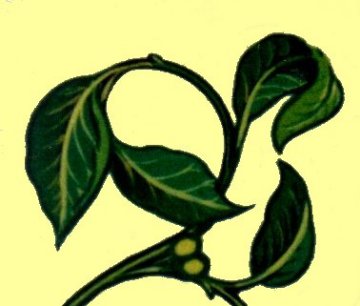 |
BRYANT G BAYLIFFE |
 |
| Section 1
of Seagry, Wilts., Esq., J.P., D.L. (1734-1813)
|
||
|
|
|||
| Section | |||
| ditto | 2 | George Searle Bayliffe - The Story | |
| ditto | 3 | Pencil Drawing of G. S. Bayliffe by Ann Banks, circa 1794. | |
| ditto | 4 | Map of Chippenham and District. | |
| ditto | 5 | Monkton Manor House, Chippenham, circa 1719. | |
| ditto | 6 | Monkton House, Chippenham, 1987. | |
| ditto | 7 | Monkton Park and House, Chippenham, 1987. | |
| ditto | 8 | St. Andrew's Church, Chippenham, by J. Buckler, 1808. | |
| ditto | 9 | Derriads Farm House, Chippenham, 1987. | |
| ditto | 10 | Map of Pickwick, Corsham, circa 1830. | |
| ditto | 11 | Map of Pickwick, Corsham, circa 1880. | |
| ditto | 12 | Beechfield House, Pickwick, Corsham, 1987. | |
| ditto | 13 | Number 41, Pickwick Street, Corsham, 1987. | |
| ditto | 14 | Tytherton Lucas Church, Nr Chippenham, 1987. | |
| ditto | 15 | Seagry Church, west and south elevation, 1982. | |
| ditto | 16 | Seagry Church, Bayliffe memorials in the nave, 1982. | |
| ditto | 17 | Seagry Church, Bayliffe memorials in the chancel, 2003. | |
| ditto | 18 | Manor Farm House, Seagry, front elevation, 1990. | |
| ditto | 19 | Manor Farm House, Seagry, rear elevation and Justices room, 1990. | |
| ditto | 20 | Manor House, Seagry, dungeon under the Justices room, 1990. | |
| ditto | 21 | Genealogy - Banks of Chippenham Wilts. | |
| ditto | 22 | Genealogy - Merewether of Chippenham and Devizes. | |
| ditto | 23 | Genealogy - Merewether, Figgins and Bayliffe. | |
| ditto | 24 | Notes and Sources. | |
| Section 2 | ||
|
of Seagry, Wilts., Esq., J.P., D.L., (1734-1813) |
||
|
The Bayliffe family of Wiltshire, ancestors of George Searle Bayliffe first settled in the Chippenham area of the County in 1567. In that year William Bayliffe, a Barrister of the Middle Temple and eldest son of John Bayliffe of Castle Cary, Somerset, Gent., bought the lease of the Manor of Monkton juxta Chippenham from his father-in-law Gabriel Pleydell who was returning to his parents' home of Midgehall, Lydiard Tregoze, Wilts., following the death of his mother. Both families enjoyed the patronage of the noble family of Seymour. William's new home, on the north side of Chippenham across the River Avon amounted to 400 acres of demesne land then called "Mounckton Ffarme" out of a total manor of 800 acres. William's descendants remained at Monkton until the death of Elizabeth Bayliffe (formerly Norborne of Studley, Calne, Wilts.) his grandson's widow in 1702. At that time the family bought the freehold Manor Farm, Seagry some five miles to the north, the property continuing as the family home until 1900. There is a separate account of the Searle family and their association with Sir John Wildman (1621-1693), Algernon Sidney (executed 1683) and the General Post Office in Lombard Street, City of London. Suffice to say that the name of Searle became well respected by the Bayliffe family and was used as a second Christian name well into the 20th century. George Searle Bayliffe was the only child born to Charles Bayliffe (1705-1735) who married secondly Elizabeth the only daughter of George Searle of St. Andrew's, Holborn, London, Middx., Gent. George was baptized 18 December 1734 at the Church of St. Mary the Virgin, Seagry, Wilts. and was less than 7 months old when his father died at the age of 29 years, almost certainly from smallpox that scourge of young adult males. His father was the first of the family to be buried in the church at Seagry 11 July 1735. Charles' only brother Richard died 2 years later, being buried at St. Andrew's, Chippenham 28 December 1737, leaving George to be raised by his mother, who stayed on at the Manor House in Seagry under the terms of her husband's Will. His Aunt Mary who had never married, was also resident at the Manor House, and the tenant farmer John Pearce was living in the old farmhouse just south and on the west side of Seagry Street. The other family member of the household was the five year old Charles Bayliffe, the only surviving issue of his first marriage to Ann (1703-1732) daughter of David Jeffereys of Calne, Wilts. When George was 7 years of age his mother married secondly Thomas Russell, a Chippenham attorney. They were both in their late 30s, and in 1741 Thomas took over the stewardship of the Monkton Manor Court1 from Charles Pickering, Gent. With her occupation of Seagry now untenable under the terms of her late husband's Will, she moved into the Russell residence in Chippenham with the 2 boys, who were now brought up and educated as befitted the sons of the middling orders. To George, being in the house of his mother and stepfather was one thing, but to his older half-brother Charles a stepmother and stepfather must have been difficult to reconcile. In 1752 at 18 years of age George could reasonably expect to become apprenticed at law to his stepfather, but Thomas died that year being buried at Chippenham on the 16 August. John Trevannion, another Chippenham attorney, Bailiff (Mayor) of the Borough 1754 and 1761, took over the stewardship of Monkton Manor Court, and was paid £108 8s 6d by Elizabeth Russell for her son's apprenticeship2. George's elder half-brother had now reached his majority and the family dispute over the Wills of his father Charles, Uncle Richard and Grandfather Charles Senior came to a head with most members of the family making depositions in the Court of Chancery following a Bill of Complaint by Elizabeth. The main issue concerned Elizabeth Russell's occupation of Manor Farm, and the taking of profits from the estate and other lands without regard to the terms of the above Wills. The original administrators of the various Wills were also deceased, which delayed resolution of the affair. However, by the time George had completed his apprenticeship and was a practising attorney in Chippenham matters had been settled, and arrangements made for his half-brother. The List of Debtors published in The Public Ledger (London) Tuesday 22 October 1761 shows that Charles was in Fisherton Gaol (Salisbury). Family papers suggest he 'went abroad and was not heard of again'. In the space of a few years many changes had occurred, not least that Aunt Mary, the sole occupant of Manor House, Seagry, had died in 1760, and William Beak had become the farm tenant. There is an inscription in Latin to Mary on a memorial tablet on the north wall of the nave of Seagry Church. The Bayliffe family arms, 'Sable a chevron between three hearts Or' are displayed on the base. George replaced John Trevannion in 1758 as Steward to the Monkton Manor Court, the Bayliffe family home for so long, a position he was to hold for the next 33 years. A typical entry in the Manor Record for that year, signed by George as Steward reads: 'The Court with a View of Frankpledge, with the Court Baron of Thomas Edridge ... the Rev. Mr Christopher Holland is guilty of a nuisance in laying his coal ashes under the churchyard wall in Saint Mary Street within the Manor and we do order him to remove the same'. George did not become a burgess or bailiff of the Borough, for what reason is not known, although he was 'admitted to his freedom' 29 September 17573. It will be remembered that the Bayliffe family connection with Monkton had ceased by 1702, and the new owners had possession of the splendid house built by William Bayliffe, George's great grand-father. The Manor Courts would have been held in the large parlour of the house, and from the Court Rolls extant from 1733, the Edridges were owners and Lords of the Manor. When George first became Steward, Thomas Edridge Esq. held the Court as one of the Committee of Trustees for the estate of Arthur Esmeade Esq., a lunatic. With two tenants for the demesne farm, and control of the estate in the hands of trustees, the house must have deteriorated. It was not until the estate passed to the heir of Arthur Esmeade Esq. about 1778, that arrangements for refurbishing the old Manor House4 were made. There have been several attempts to date the rebuilding of the house which is before us today. It appears likely that the famous firm of Wood and Sons of Bath, who had designed and built Hardenhuish House, and 45 St Mary Street, Chippenham, about 1774, prepared drawings for Monkton House based on those designs5. In 1783 the Manor Court was held in the old house, but in 1784 the Court was held at The Angel Inn, Chippenham6, before its return to Monkton House the following year - a convivial occasion perhaps, and no doubt held there whilst Monkton was being altered. The main fabric of the old house was retained, the roof was raised, and the original attic rooms with dormer windows became a third floor. The outside was clad in ashlar limestone to match the fashionable Georgian style, and the old porch and pediment reused. According to a note in the margin of an abstract of title7 William Gaby, an eminent Chippenham attorney, bought Monkton in 1785. He was the first of several new owners. It has since been refurbished and in 1987 the house was sold as flats, retaining the external integrity of the 1784 building, which is Grade 2 listed8. The grounds fronting the River Avon, now in public use, are currently a public park, swimming pool and pitch and putt golf course, the remainder having been developed for housing with the expansion of Chippenham after the 1939-45 World War. On 18 January 1762 Mary Merewether and George Searle Bayliffe were married at St Andrew's Church, Chippenham. Mary was the eldest surviving daughter of Mary Selby and Dr John Merewether, a member of one of the most eminent families in Chippenham. Mary's parents are buried in the church, with their memorial in the floor of the chancel. George's widowed mother probably lived with him in Chippenham at his freehold dwelling and garden on the Causeway. He also held a burgage messuage, workshops, and coach house in the Borough. The family had a pew in the church, which was over the family vault at the east end of the nave9. The plan of the lay-out and entitlement of the pews is a 'Who's Who' of the Borough hierarchy in 1787 and the Bayliffes had been represented there continuously since the mid 16th century. It is unfortunate that the family memorials on the north wall, at the east end of what was then known as 'Bayliffes Aisle', have not survived the various alterations to the church fabric over the years. We have to thank John Aubrey F.S.A. (1626-1697) from Kington St Michael, some 3 miles north of Chippenham for these details taken from his notes now preserved in the Bodleian Library, Oxford, and used by Canon J. E. Jackson in his "Wiltshire Collections" published in 1862. George's great Uncle Henry Bayliffe of Chippenham who had died in 1722 bequeathed his house in Back Lane, Chippenham, to his unmarried daughter Elizabeth who died 5 years later in 1727. The property was then held in trust by John Merewether who paid the parish rate up to about 1737, when it was occupied by Mr Thomas Figgins Sen'r., a Chippenham clothier. The family were great friends of the Merewethers and Bayliffes. The Figgins and Merewethers inevitably became burgesses of the Borough and provided the Bailiff no less than eight times between them. During the 1770s the Figgins' social circle included the provincial acting fraternity centred at Bath where a certain Mr John Henderson (1747-1785) was just beginning his stage career. On 13 January 1779 John Henderson married Jane, a daughter of Mr Thomas Figgins Jun. at St Andrew's Church, Chippenham. Sarah Siddons 8 years his junior, acted with Henderson many times and largely due to his recommendation to Sheridan and Linley at Drury Lane and with her undoubted talent, she went on to become the great tragic actress and national figure. There was a period of 6 years from 1776-1782 when Sarah Siddons was settled at Bath with her young family, learning her art and establishing her reputation. The theatre was then in Orchard Street, Bath, and was ranked second only to the London stage. The theatre closed with the opening of the present Theatre Royal, adjoining Beaufort Square, on 12 October 1805. Both Siddons and Henderson are remembered on a tablet attached to the original theatre building in Orchard Street, now the Masonic Hall. Reverting to Mary Merewether who married George, it is clear that through these family circles both Mary and her eldest daughter Mary Susanna became friends with the great actress. When Mary Susanna made her Will in 183210 (then the widow of Thomas Crook, Esq.,) she held 'a leasehold messuage with the court and offices thereto belonging on the north side of Trim Street, Bath', only a few yards from the new Theatre Royal and the Garrick. Her daughter Mary Susanna Ebsworth was paying the rate for number 4 Trim Street in 1838, which was only a few paces from the home of the famous General Wolfe at number 5, the other side of the Queen Street archway. In her memoirs11, Sarah Siddons refers to Jane as 'a very amiable lady, who for a series of years honoured me with her friendship ... Mrs Henderson was worthy of her husband ... She was not herself at all theatrical nor given to recitation in the slightest degree ... upon her daughter Harriet's union with Mr James Moore the brother of Sir John, the General, she devoted a long but not melancholy widowhood to the occasional society of friends by whom she was greatly respected'. After the burial of Jane she writes 'I saw her borne to join once again her excellent husband in the proudest spot of the noblest mausoleum in the world, the Abbey Church of Westminster'. For the record, John Henderson whose talent was in the opinion of many second only to Garrick, was buried in Westminster Abbey in the South Transept 3 December 1785, and his wife Jane was buried with him 3 March 181912. George Searle Bayliffe had a flourishing practice in Chippenham, and the amount and type of work was increasing. As generation succeeded generation in the noble, middling, and yeoman classes, so the amount of legal work increased. The spread of land ownership to more and more people and later in the century, the increase in public works such as canals and turnpikes, ensured plenty of work for the solicitors and attorneys. George was appointed in 1773 as one of the trustees of the Calne Turnpike Trust, a roadway which effectively bypassed the old London to Bath road through Sandy Lane. Although he was not in regular attendance at the frequent meetings of the trustees, his brother-in-law, the attorney Henry Merewether, was the Treasurer and Clerk to the Trust. These meetings were held alternately at the 'White Hart Inn', and 'The Catherine Wheel Inn', Calne. George was also involved in criminal cases, and we can follow the drama of at least one such case in 1774 in the article written about 1894 by Mary Light in the first volume of "Wiltshire Notes and Queries" 1893-1895. pp. 407-410.
AN AFFAIR AT BROAD SOMERFORD
Just over 120 years ago late on a Saturday evening in September 1774, the little village of Great (or Broad) Somerford, near Malmesbury, was the scene of a daring escapade which must have caused great consternation in the place and neighbourhood. It was an attempt to carry off a young lady, Miss Elizabeth Smith, then about 21 years of age and heiress to a "considerable fortune", to quote her mother's words in a quaintly written account of the affair found among some old papers. A pretence was made of delivering a parcel which had to be given into Miss Smith's own hands, but Madam Smith (as she was called) becoming alarmed at the commotion caused by the "three or four gentlemen-like-dressed men in the court att such a time of Night and the servant abed, happily had the presence of mind to lock and pin the door." After a good deal of parleying "att the casement" a Mr. Williams who was in the house interfered; whereupon one of the men "swore he would blow his brains out, and presented a Blunderbuss." Mrs Smith, who was a widow, then "fled out of the hall and put a great wooden bolt to make the door faster, and called a man out of his sleep, and ran upstairs and beat a brass pan out of the window to alarm her neighbours, so they made off." The gang consisted of "two men in a chaise and four horses, two postillions, three men on saddle horses with swords and pistols," and they had been hired by Michael Hickey a master-tailor of Bath, who though he was said never to have seen Miss Smith in his life, had procured a license, as was proved by the evidence at the trial, and hired another chaise and four to be waiting at Box, "to take her by force and carry her to some place to marry her." Another account said that Hickey had been employed in making Miss Smith's riding-habits, but this seems doubtful, and the young lady herself was away from home on a visit when the attempt was made. The pursuit of the ruffians was at once taken up by Mr George Searle Bayliffe, attorney at Chippenham, who traced him to Bath, and searched the George near the X [?] Bath, Hickey's place of resort, but without success. In November the fellow was heard of in London, when Mr Bayliffe had an interview with Sir John Fielding at his house in Bow Street, and Hickey was identified at the Bridewell in Tothill Fields by Mr Wyman of Bath, and George Ladd, and finally brought down to the Devizes by Blanchville Clarke, who received a reward of 10 guineas and 8 guineas for expenses. Tristram Jarman captured Wm. Toole, one of the gang at Bristol, and another called "Strawback" was also taken, all three being lodged in the Devizes Bridewell until the following January when they were tried at Salisbury. Hickey was convicted on the clearest evidence and sentenced by the Rev. Dr. Wake to imprisonment for one year, to pay a fine of 13s. 4d. and to give security for his good behaviour for three years in £100, with two sufficient sureties in £20. each. His demeanour during the trial was very eccentric, though he "afterwards explained himself with a decency which the Court approved." There are some interesting details of Mrs Smith's journey to Salisbury, stopping at The Bear at Devizes and at Lydeway; the Maidenhead Inn and Moon Tavern in Salisbury are also mentioned, while the lawyers engaged in one way or another in the case were Mr H. Fothergill of London, Mr Gaby of Bromham, Mr Ralph Gaby of Chippenham, Mr Morris, Mr Batt, and Mr Widmore. Mr William J. Rogers of Chippenham also went to Bath and took an active part in the chase. When the year's imprisonment had expired there were more proceedings and journeys to prevent the discharge of the prisoner, whose securities were not forthcoming, Mr Bayliffe being detained at Salisbury in January 1776 for six days owing to the deep snow and severity of the weather; on which occasion Hickey addressed a petition to Dr. Wake and Mr. Penruddock, complaining of his cruel treatment by the keeper of the prison at Devizes, and begging to be removed to Salisbury. In March he was brought before Mr Cam, Mr Johnson and Mr Newman at Bradford, and was probably discharged at the Easter Quarter Sessions, begging hard for his liberty and submissively offering to forfeit £100 if he were ever seen in the parish of Somerford again. Hickey had a very bad record before this escapade, and as it was expected that he would be in the hands of the bailiffs as soon as he was out of custody of the Bridewell keeper, it looks as if he had his deserts. The whole affair cost Mrs Smith about £100. Miss Smith died unmarried in 1797, aged 44 years, having adopted a young relative, William Jones whose name was changed to Smith, and to whom she left the Somerford property. He practised for a time as a surgeon at Tetbury, and afterwards gratuitously for the benefit of the poor, as a subscription monument in Somerford church testifies. He died suddenly at a hotel in Clifton, while attending a medical meeting in July 1833, and being unmarried the estate by Miss Smith's Will went to his sister, Mrs Mary Birtill in whose family it still remains.
We continue the story with the children of George Searle Bayliffe and Mary Merewether. Two boys and three girls were born between 1762 and 1775 and the blight on the family succession caused by premature death due to the smallpox and influenza epidemics of the time seemed to have lifted. However any optimism was shattered by the death of his wife Mary who was buried at Seagry 5 May 1779 aged 47 years. Her epitaph in Latin appears on the memorial tablet on the north wall of the nave. She made no Will of course, and it was left to the eldest daughter Mary Susanna then 15 years of age, to help with the upbringing of her sisters Ann and Lucy who were 14 and 10 years old respectively. The elder son, George Merewether Bayliffe was an attorney in Chippenham when he died 4 years after his mother, aged 22 years. He died unmarried at Kingsdown near Bristol and was taken for burial at Seagry 9 February 1784. His name joined those of his grandfather Charles, great-aunt Mary and his mother on the memorial in the nave; 'Placida compostus morte quievit'.13
Mary Susanna Bayliffe the eldest daughter, baptised 30 May 1764 at St Andrew's Church, Chippenham married Thomas Crook of Tytherton Lucas, Wilts., Esq., 3 July 1787 at the Church of St. Bartholemew, Corsham, Wilts. By this time her father a widower of some 8 years, had moved to Pickwick House, Pickwick, Corsham, Wilts. This was quite a society wedding, meriting an entry in the 'Marriages of Eminent Persons' section of the Gentleman's Magazine. It is clear that her father George was courting the lady who was to become her stepmother some 4 years later. Several sources show that the children of the first marriage resented this development, which was to have profound consequences.
Mary Susanna had two younger unmarried sisters. Ann Lloyd Bayliffe, born 1765 at Chippenham died 1788 at Tytherton Lucas in the care of her elder sister. The following year The Bath Chronicle dated 12 November 1789 lists George and the surviving sister Lucy attending the First Dress Ball at the Lower Assembly Rooms, Bath. Born 1769 also at Chippenham Lucy died two years later in 1791 at Pickwick House apparently in the care of her father. Significantly, both young women in their early 20s were buried at Tytherton Lucas, not at Seagry the family home, Chippenham, or Corsham. A memorial tablet in Tytherton Lucas church includes 'as a tribute of affection their surviving sister Mary Susanna Crook has caused this tablet to be erected to their memories', not as one might have expected by their father George.
It would be as well to stay with Mary Susanna Crook, since it is from one of her descendants that we learn more of the personality of our main subject, George Searle Bayliffe. Ellen Mary Bethell, in her pamphlet "History of the Wood Family until the year 1847", writes of her grandmother Mary Susanna Crook:
'Her marriage was not a happy one; although possessed of great beauty, of rare talents and remarkable learning, she had not that sweetness of temper and softness of manner that gain affection; still she wished to be a good wife and in many things was of great service to her high spirited, talented, but most eccentric husband'. The writer describes Mary Susanna in her last years: 'She had for some years been unable to walk from rheumatism and her sufferings had been extreme, but her great mind was bright to the last. She had never been an accomplished woman, but she was a very learned one. Being much with her father when young she had acquired a greater knowledge of the law and general business than most women attain. She also was a good Latin scholar. I remember her reciting passages from Virgil with great feeling but a short time before her death. Her character was stern and determined, somewhat too harsh to gain much love, but her trials were very many and form a great excuse for her informity of temper. She was rigidly just, wise and prudent in the management of her property and sacrificed much personal comfort for the good of her children. She was short in stature but her features possessed rare beauty which even age could not destroy. She retained her perfect white teeth and brilliant complexion to the last end. When death came she met it with the same undaunted firmness that she had encountered all the evils of life. She was buried at Tytherton Church. There is a portrait of her by Ward, like, but not so beautiful as she really was'.
Her husband died 24 November 182114, and Mary Susanna later moved to Barn Bridge Farm in the adjacent Parish of Bremhill and Kellaways. Among other land scattered in the parishes of Langley Burrell, Chippenham and Hardenhuish, she also held Thornhill Farm, and Estate Farm and lands at Eversholt, Beds., which had been devised to her by Charles Searle Lloyd, then late of Islington, Middx, Gent, lawyer, as trustee to William Crook to hold for her daughter Mary Ebsworth. As previously mentioned she held the lease of 4 Trim Street, Bath, which also passed to her daughter. Mary made her Will at Barn Bridge Farm 5 April 183215, and died exactly 4 years later. Her Will was proved 15 July 1836 at London on the oath of her daughters Ann Wood, a widow [mother of the above Ellen Mary Bethell] and Mary Susanna Ebsworth.
Her epitaph on the memorial tablet in Tytherton Lucas Church is added to that of her son and husband, who predeceased her:
'Near this place are deposited the remains of Francis Lovegrove Crook only son of Thomas and Mary Susanna Crook. He was unfortunately shot by his companion on the 2nd of September 1820 aged 24 years. Also the remains of his father Thomas Crook who during the time of his possessing and occupying the greater part of the land in the Tything of Tytherton (and being Churchwarden) caused this church to be rebuilt A.D.1802. He departed this life November 24th, 1821 aged 72 years. Also of Mary Susanna, relict of the above named Thomas Crook, and daughter of George Searle Bayliffe Esq. of Seagry, Wilts. She died April 5, 1836 aged 71'.
Henry was the youngest of the 5 children born to George Searle Bayliffe and Mary Merewether. He was baptised at Chippenham 28 June 1775 and was 3 years of age when his mother died. He became heir apparent to the small family estate in 1784 at 9 years of age on the death of his elder brother. His first marriage 25 September 1798 to Ann the only daughter of Robert Gale of Stanley, Nr Chippenham was now the only chance of continuing the male line. They immediately moved to Blue House, Llanishen, Nr Cardiff, Wales to farm 3 miles north of Cardiff Castle. Henry had forsaken the Law and there were two children by Ann both dying young and Ann herself died being buried at Chippenham 14 December 1802. However Henry married secondly 22 December 1803 Betty Ely of Langley Burrell, Nr Chippenham. The couple returned to Wales and had issue which ensured the male line.
Meanwhile the house and farm at Seagry were now tenanted by William Beak who had taken over from John Pearce in 1759 when the final settlement of the estate had been reached. Since the death of Aunt Mary at Seagry in 1760 no family member appears to have lived in the village for the next 32 years, with the consequent deterioration of the fabric of the manor house, farm house, and outbuildings. It appears that George's mother, the widow Elizabeth Russell remained in the Chippenham town house through all these events. We must remember that she was 88 years of age when her granddaughter Lucy died, and no doubt being at ease with her friends in the town, was not inclined to follow her son to the grand but more remote country house at Pickwick, Corsham.
During the fifteen years or so that he was resident at Pickwick House, George apparently concerned himself less with Seagry, and only in 1785 do we find his signature as a witness to the parish account. By this time Charles Beak, probably the son of William had the tenancy of the farm. George was involved in a variety of work including legal support to the Borough and Parish Councils, Manor Courts and the like and the routines of being an attorney including some criminal cases. He was steward for the Manor of Monkton from 1758-1791 and for many years held the same position for the Manor of the Rectory of Corsham. There is a document16 dated 14 September 1779 where George signs as steward at Corsham which includes a good example of the seal he used at that time. The heraldic seal is of Bayliffe impaling Merewether with the family motto 'Spe et Spiritu'. His wife Mary, formerly Merewether had died only 4 months earlier.
In the 18th century the leasehold property called Pickwick House, was a substantial house set in private grounds. Originally called 'Leyceters', the house came to a certain Edward Bayley in 1691 and a sketch was made for a survey of the house at his death. The ownership of the house changed again before Thomas Bennett sold it to George's landlord the Reverend John Law Willis who in the early 1790s indicated that he wanted to rebuild his house. In due course George gave up the lease, and the old house was demolished. The splendid replacement was built immediately to the west of the old building in the period 1794-1799 with outbuildings and stabling to the rear. A new driveway had entrance gates onto Middlewick Lane, which gave rather confined access to Pickwick Street. The house has survived to the present time as a Grade 2 Listed Building17.
The later history of this building is of interest, for after several more changes of ownership Gabriel Goldney (later Bart.) acquired it in the 1840s and carried out major alterations. The Goldneys had been in Chippenham since before the Reformation and Gabriel, who became an attorney was living at Lowden in the Parish of Chippenham to the west of the town. The approach of Brunel's Great Western Railway in the late 1830s caused him to move into the Borough to live, and to start a practice with T.A. Fellows before buying Pickwick House.
Gabriel Goldney did not settle at Pickwick immediately after his purchase, and was admitted to his freedom of the Borough of Chippenham 19 May 1840. He was Mayor in 1853 and appears to have moved to Pickwick around 1860, resigning his Chippenham Borough posts and privileges when he became M.P. for the Borough in 1865. He was still M.P. for Chippenham in November 1885 when the Parliamentary Borough was disenfranchised.
The alterations which he carried out included extending the house to north and east, whilst retaining the integrity of the Georgian elevations, adding more stabling in a 'U' shaped configuration, outbuildings and glasshouses. The site of the old 17th century house was now a broad lawn extending from bay windows on the east elevation to Middlewick Lane. More tree screening was added, and a new drive directly from the Bath Road to the south west was now complemented by a large extension of the old carriage drive to the east of Middlewick Lane for 150 yards before coming onto the main road then called Pickwick Street, giving a more impressive and commodious access. The Corsham Tithe Map of 1839 shows the house without the Goldney additions, still named Pickwick House. It was during the rebuilding that Gabriel must have decided to rename the house 'Beechfield'. His son, Frederick Hastings Goldney, the author of 'Records of Chippenham' published in 1889, succeeded him at the house on the death of Gabriel in 1900 aged 87 years. The house opposite the point where the eastern coach drive came onto Pickwick Street is now called 'Pickwick House', a cause of some confusion to the casual researcher.
'Beechfield' was taken over by the military during the Second World War and the grounds filled with timber huts. Thereafter The Bath Academy of Art occupied the house moving back to Bath in 1986. For a while the property deteriorated but Corsham Town Council came to the rescue. The house was refurbished, and in 2002 the grounds became the Beechfield Nature Area. The coach drive to the east of Middlewick Lane has disappeared under a new housing estate.
At Corsham on 15 August 1791 when his only surviving son Henry was 16 years of age George married for the second time. Ann Banks, baptized 10 April 1766 at Chippenham, was the daughter of Thomas Banks of Derriads Farm, Chippenham, Yeoman, and Betty the daughter of Robert Ely of Langley Burrell, Wilts, Yeoman. George was then 57 and Ann at 25 years of age was well educated, and quite artistic. She made a pencil drawing of George a few years later around 1794 after he had become a Justice of the Peace. Letters written by her in 1841 and 1843 have survived, giving testimony to her scholarship18.
This branch of the family of Banks had been established in Bromham and Chippenham since the 16th century. In particular they were associated with the wealthy landowning family of Norris of Nonsuch House, Bromham. In 1710 William Norris of Lincoln's Inn, bought the Manor of Chippenham, Sheldon, and Lowden, and about 1718 John Banks first appeared as tenant of Derriads Farm. His son Henry took over the tenancy in 1725 and in 1728 a survey of the Norris Estate was made when John Norris, son of William, owned the Manor19. Out of a total Norris holding of 978 acres, Derriads was 117 acres, and a later undated rent-roll20 circa 1750 shows Henry with Derriads Farm, Hungerdown, and other lands, making a total around 200 acres.
The Derriads farmhouse which is Grade 2 listed21, an adjacent cottage and farm outbuildings were built during this period in rubble stone with stone tiled mansard roof. Thomas Banks became tenant in the 1760s upon the death of his father, and married Betty Ely at Langley Burrell by licence 28 May 1763. In 1991 having been empty for some time, the property was deteriorating pending housing development in the grounds. The original farm house has survived, and is now surrounded by the new developments.
The Manor House and Farm at Seagry were now in a poor state, and with his impending departure from Pickwick House, George set about extending and refurbishing the property. The extension of the south elevation made a big difference to kitchen arrangements, with the original building near the rear door retaining its function as dairy, tackle room and store, with cheese loft over.
It was the practice for Justices of the Peace to have a room at their dwelling set aside for the performance of their many duties, with secure overnight accommodation for persons remanded to the Bridewells at Devizes and Fisherton Anger, Salisbury. Simple matters of law, such as the issuing of Recognisances for persons to keep the peace, and perhaps attend the next Sessions or Assizes, would be dealt with in the Justices room. There was also a wide range of duties concerning the supervision of local government at Hundred level including collection of Land Tax, overall responsibility for the proper collection of rates, making disbursements, etc, through the constables, overseers, and churchwardens and his attendance at vestry meetings. The more serious breaches of the law were dealt with at Petty and Quarter Sessions where their attendance was required. Since the old Manor House was not very large George was obliged to have a purpose built justices room and lock-up, and very ingenious it was.
A low roofed 'cellar' half in the ground, had the stone floored Justices room above to which access was made by 6 shallow stone steps from the footway to the rear door of the main house. The cellar measured 20ft. 6in. by 8ft. 6in., and the arched brick roof had 9ft headroom at the highest point. In the corner, to the right of this entrance door, was a further secured door to a tight spiral stone staircase which went down directly from the Justices Room to the lock-up. It is not certain whether the low headroom door at the rear of the lock-up is original. Entry to the cellar is now made by steps leading down directly from a spacious larder at the rear of the house. There is a hearth in the Justices room, and the building is skewed to the main property filling the gap between the house and the old dairy and tackle room. This clever layout is achieved without complications to the roof timbers, since the splayed gable follows the line of the sloping ridge of the hipped roof. It is recorded in family papers that the villagers referred to the cellar as 'the dungeon' well into the 20th century. As he stated in his Will made about 18 years later, 'Henry [his son] will have the benefit of the repairs and improvements I have made to my house and farm at Seagry ... free of the encumbrances which I have now discharged'.
For the first time in many years the Bayliffes were back at the family home at Seagry. On 29 August 1792, a son of George Searle Bayliffe and Ann Banks was baptised not surprisingly George Searle Bayliffe, but the boy died within 5 years being buried at Seagry in September 1797. Ann's father Thomas Banks died in 1794, and it appears that Ann's unmarried sister Alice moved to Seagry, from where she was to marry Thomas Spencer 27 April 1799. Thomas Spencer was a Chippenham surgeon, elected Bailiff of the Borough in 1797, 1811, and 1827.
George's mother, the widow Russell who had been watching all these family machinations from the relative peace of her Chippenham home, was by 1795 aged 90 year old and joined her son George in the much improved accommodation at Seagry. She must have been quite a character since she would remember her father George Searle, who would recount the tales of political intrigue surrounding Major John Wildman (later Sir John), his friend Algernon Sidney the patriot and republican executed in 1683, the demise of King Charles II and departure of his brother James II, the ensuing Glorious Revolution of 1688, and in her own lifetime the Hanoverian succession, the South Sea Bubble in which her father was reputed to have lost most of his fortune, the American War of Independence, the French Revolution, and the rise of Napoleon Bonaparte. She had heard and seen it all. There was also the knowledge of the decimation of her own family and of the Bayliffes by premature death from a variety of epidemics. There can be no doubt that her advice in her last years was for her grandson Henry to marry and start a family forthwith, preferably away from areas of known health risk. Elizabeth Russell was aged 93 years when she died, with burial at Seagry 3 November 1798, the year of her grandson's first marriage and move to Wales. There is a small brass plate to her memory directly under the Bayliffe memorial tablet on the north wall of the chancel.
As if spurred on by these events George, now in his late 60s and Ann had issue of two more children. A daughter Anna Georgia was baptized at Seagry in 1801 and a son Charles Searle Bayliffe in 1802. He must have doted on them and was no doubt relieved that the male line was now secured.
Recently appointed a Deputy Lieutenant of Wiltshire, the state of national crisis at the time is highlighted by an impassioned speech22 made by George to the assembled parishioners of Seagry on 3 August 1803. No doubt similar speeches were made up and down the country in an effort to boost morale and perhaps more importantly, to unite all classes of society against the French.
The substance of the speech was as follows:
GENTLEMEN:
The Resolutions of the Lieutenancy of this County, which I have just read to you, and the Acts of the Legislature, to which they allude, but too well assure us, that we are now arrived at a very important Crisis, in which it must depend on our own Exertions united with the Exertions of our Neighbours and Fellow Subjects. - Whether we are to enjoy for a longer period, the Blessings of our envied Constitution, and the glorious Liberty of Britons, so wisely established by our Ancestors, and by them transmitted to us, the Price of their Blood and treasure, and which have hitherto withstood every Attempt of Foreign Enemies and Domestic Tyrants to destroy it; - Or whether we shall tamely submit to become, with our Wives, our children, and our Parents, the Victims of that insatiable Tyrant and Destroyer of the Human Race; whose enormities (such as are detailed in the printed Papers placed on your Church Door, and circulated in the Public Prints) are now practising in a neighbouring Part of Europe, against the paternal Government of our Beloved Sovereign; where the Wife is torn from the Arms of her Husband, and the blooming Maiden from the Protection of her Lover by the brutal Lusts of armed Ruffians, who have enlisted under a Usurper, allured by the Prospect of Plunder to arise from the Invasion of our beautiful Country.
Should they succeed in their diabolical Intentions, - think not that their horrid Depredations will be confined to the Mansions of the Rich, or that the Cottage of the Poor will be more secure, than the Palace of the Nobleman. Your vigorous Youth will be driven from their Native Country to extend the French Conquests and insulting Cruelties to the remotest Regions of the Earth. - No more shall the Labourer return to his peaceful Habitation to enjoy his well-earned Meal. The Mother will no more be permitted to nourish her Infant at her breast, or with Food procured by the honest Industry of her Husband, or by the charitable Provision of our humane Laws. - Humanity and Compassion will expire with the Objects which excite them. - What they cannot enjoy they will consign to the devouring Flames, or other modes of Destruction. - We shall all, without Distinction, become prey to that Vengeance which they daily denounce against us.
But I will dwell no longer on such a gloomy Prospect, I know, - I feel by a Kind of Inspiration, that the Inhabitants of Seagry and the surrounding Villages, will not be found amongst the last to come forward in Defence of the Religion, the Laws, the Liberties, and perhaps the very Existence of their dear Country. - This yet happy Island, 'Dear for her Reputation thro' the World!' but that we shall most cordially unite our Hearts and our Hands in so glorious a Cause, which the Resolutions I have read, and the Engagements to which I solicit your Signatures, will (with the Blessing of the Almighty) enable us to do.'
Meanwhile, the Calne Turnpike Trust was still very much in business, and with the death on 4 September 1803 of the long serving Treasurer and Clerk, a special meeting was convened at the Catherine Wheel Inn 'to elect a proper person ... in the room and place of Mr Henry Merewether dec'd'. The meeting, chaired by Mr Joseph Jeckyll Esq., was attended by a huge gathering of about one hundred of the local gentry and clergy, including George Searle Bayliffe, his son Henry, son-in-law Thomas Crook of Tytherton Lucas, and the Reverend Francis Merewether. Henry Merewether's son John the attorney of Blackland, Calne, was duly elected. The annual Land Tax assessments for the 20 years that George was back at Seagry, 1793-1813, shows him listed as proprietor and occupier of Manor Farm. In fact whilst George lived in the Manor House, the farm house and outbuildings across the road with the associated pasture were occupied free of rent by John Young whose parents farmed at Dauntsey, a village 4 miles to the north east of Seagry. John is styled 'Dairyman'23, not uncommon in that part of north Wiltshire, an occupation also described as share milking. This curious arrangement involved the dairyman renting the cows on a yearly basis from the land owner. He made the butter and cheese, and could keep his own poultry, etc., on the premises. The income from the sale of the cheeses and other produce through the local factor or directly at market was his own. Whereas John Young had to do his statute labour for the highways amounting to the 24 days with a wagon for the year, George always compounded based on the annual valuation of £20. Ann, a daughter of John Young, was later to marry George's grandson, Henry, referred to above. On 6 May 1812, when George made his Will24 he was styled 'Esquire', an appropriate appellation, due to his position on the Commission of the Peace for the County. The 'lands of inheritance' in Seagry and Langley Burrell being limited, were entailed to his only son Henry still living in Wales. George was satisfied that the remainder of his real and personal property would barely enable him to make adequate provision for his wife Ann and their son and daughter. The Chippenham property, then occupied by a Mr John Hibbard could be disposed of by Ann as she wished. In fact she held on to it drawing the rents and retaining the family pew in St Andrew's Church, which now tended to go with the property rather than the person. It is in this Will that reference is made to his 'old watch in a steel case studded with silver, in the inside of which I have caused a Latin inscription to be engraved denoting that it was given by the illustrious Algernon Sidney in the last period of his life to my maternal grandfather George Searle, then of Dogmersfield, Hants., as a memorial of his friendship, and which I hope my said dear son Charles Searle will preserve and esteem as such'. The reference to Algernon Sidney and the last period of his life, concerns the time between his return from exile in 1677 and his execution in 1683. George Searle was then unmarried and living at Little Queen Street in the service of Major John Wildman. It follows that he may well have been addressed by some people as living at his parent's home in Hampshire, until he was able set up his own home after Wildman's death in 1693. He left his Government Stock to his two children and to Ann herself his share in the Old Bath Insurance Office25. The Old Bath Office was to be taken over by the Sun Fire Office in 1827, and following further amalgamations is now the Sun Alliance Insurance Group. Robert Kemm was the Agent for the company in Chippenham, one of the first towns outside the Bath area to have a representative. It is noticeable that the Will confirms the rift between George and the surviving children of his first marriage Henry and Mary. Henry is only mentioned as the heir of the entailed lands and Mary Susanna is not mentioned at all. In another extract from the pamphlet by Ellen Mary Bethell she writes: 'My grandmother [Mary Susanna Crook, nee Bayliffe] never forgave her father for his unfortunate [2nd] marriage, he never forgave her for her anger, and after a separation of twenty years they met only when he lay on the bed of death. He left her no property although he approved of her marriage which took place when she was twenty-three' Indeed George probably correctly, must have taken the view that his daughter had married into a wealthy family and her future was secure. Ellen Mary Bethell refers to the family again and although undoubtedly highly subjective, bearing in mind the attitude of her grandmother above, her comments do have a certain merit: '... He [George Searle Bayliffe] was a Magistrate and Deputy Lieutenant of the County , a man of learning and ability ... and by a foolish second marriage greatly injured his children of whom he had five [by his 1st wife] ... the remaining son [Henry] was utterly neglected by his father and stepmother, sought inferior associates, made unfortunate marriages and the only representatives bearing the once proud name are now sunk to a position from which it seems hopeless to imagine they can rise ...'. The Will also reveals that he held 'a copyhold messuage with appurtenances in Pickwick in the Town and Parish of Corsham, Wilts, which was, at a late General Court held in and for the said Manor, surrendered to myself and my wife and the survivor of us'. This is number 41 Pickwick26, the Grade II Listed Building on the west corner of the junction of Pickwick Street with Middlewick Lane. There was clearly no way that Ann could live in the same house as her stepson Henry, so George made arrangements for Ann to occupy this property in anticipation of Henry's return to Seagry from Wales to take up his birthright upon his father's demise. With an attractive ashlar stone frontage facing north east, number 41 Pickwick, built about 1760 had a coursed rubble stone gable fronting the main road. The total area of the site was only one farundel27, and a high wall gave privacy against the main thoroughfare. It is not surprising that Ann had a pew in a spacious gallery erected in 1817 on the north side of Corsham Church, paid for by the voluntary contributions of a group of local worthies, which included Ann28. Ann had a personal servant, Ann Howell a spinster and 17 years younger than herself. Being late steward of the Manor of Corsham, George would have had no difficulty securing this copyhold, and it is clear that his wife Ann and the two children were settled in, and that she was nursing him there when he died a year after making the Will. George Searle Bayliffe was buried at Seagry 7 May 1813 aged 78 years. There is a memorial tablet to his memory in the chancel of Seagry Church. George's executors were the attorney John Merewether of Blackland, Calne, Esquire, the eldest son of his brother-in-law Henry Merewether previously mentioned, and Thomas Spencer of Chippenham, Surgeon, who had married his sister-in-law Alice Banks at Seagry twelve years earlier. The executors were to be guardians of the two children during their minority in the event of Ann's death. The Bayliffe and Merewether families were still very close well into the 19th century, and a letter now lost showed that in 1810 George, Ann and the children were staying at Blackland. George's Will was proved at London by his widow 28 July 1813. His son Henry retained the lease at Llanishen, Cardiff, Wales, until his father's death. Arrangements were made for Henry to return to the Manor House, Seagry, as head of the family, and take up his lands of inheritance. His widowed stepmother, half-brother and his half-sister were now settled in the copyhold house at 41, Pickwick, Corsham. Henry and Betty were to return to Wales after his father's burial for the winter of 1813/14, to make arrangements for their departure, and on 14 February 1814 a daughter Elizabeth was baptized at Llanishen. In the spring they left Wales for the last time, with a second baptism for Elizabeth at Seagry 18 May 1814. Ann's two children were brought up at 41 Pickwick and the boy Charles was sent to Marlborough Grammar School29 like his ancestors before him, to endure the same rigours and follow the same classical curriculum. The discipline was still harsh, and it is recorded that Charles, who had witnessed a particularly horrific attack on a pupil by a Mr Lawes, was not permitted by his mother to give evidence when the case was brought to trial at the King's Bench. The hand of fate moved yet again. Charles died of typhus fever at Calne 9 April 1823 when 20 years of age, with burial at Seagry 4 days later. Charles was following in his father's footsteps becoming an Attorney's Clerk with Atherton and Gabriel, Attorneys of Calne. Anna Georgia who had been nursing her mother for the same disease from which she was to recover, was herself struck down with typhus fever. She died at Pickwick, and was buried at Seagry 23 July 1823 aged 22 years, nearly three months after her brother. As the memorial inscription in the chancel reads: 'after performing every filial duty to her surviving parent in the same fatal disease, fell herself a victim to it. Lovely, amiable, and accomplished, equally attached with her brother to science and literature, and endowed with a correct and classic taste'. A grievous loss by any standard and so it was that after all, Henry's children would be crucial for the continuation of the family name. Ann was now without husband or children, and found it necessary to alter the conditions of her copyhold of No 41 Pickwick. She attended a Court Baron of Paul Methuen Esq., at Corsham 3 months after burying her daughter to surrender No. 41 Pickwick in the Town Tything, to the Lord of the Manor. By the custom of the Manor she 'did give, grant, devise, limit, and appoint to her niece Mary Spencer, by then the widow of Henry Spencer, the copyhold after her own death'. George's widow Ann Bayliffe remained active in society with an alert mind to the end30. She died at Pickwick aged 81 years, with burial at Seagry 11 September 1847, where the event is recorded at the bottom of the memorial tablet in the chancel to her husband and two children. Ann had made her Will 6th May 184731, adding a codicil dated 26 July 1847, with provision for an annuity for her servant Ann Howell who moved to Priory Lane, Corsham to be with a sister-in-law. Because of the Will of her husband, it was only personal and household items that Ann bequeathed to issue of his first marriage. The remaining substantial holdings of stock and property at Lowden, Chippenham, Pickwick and Bath, which would have gone to her children Charles and Anna but for their early demise, went to the descendants of her sister Alice Spencer of Chippenham. These included the families of Spencer, Hunter Blair, and Dashwood. Her cousins Ann and Elizabeth, the daughters of John Banks of Bromham, Wilts, Maltster, also received legacies. Ann the elder daughter married the well known Chippenham businessman Mr John Provis who lived in the northern part of Chippenham at 'Orwell House'. He was a timber-merchant, builder, civil engineer, designer and inventor, and was engaged in the construction of Brunel's Great Western Railway in the vicinity of Chippenham. Their only surviving issue was a son Alfred, born at Orwell House 18 February 1818 who soon left home to become a successful painter in London. A large library went to the Spencers, and Mary Spencer the widow of her nephew Henry Spencer took over the copyhold of No 41 Pickwick. The property in Bath was a leasehold house at No 2, Chapel Row only a few yards from the new Theatre Royal. An inventory of the books in her library was taken by Francis Spencer of Chippenham, one of her executors, and the Will was proved at London 31 December 1847.
|
||
| Section 3 | ||
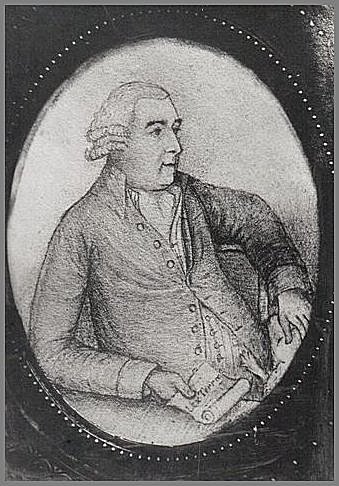
Pencil Drawing circa 1794 by his second wife Ann Banks |
||
| Section 4 | ||
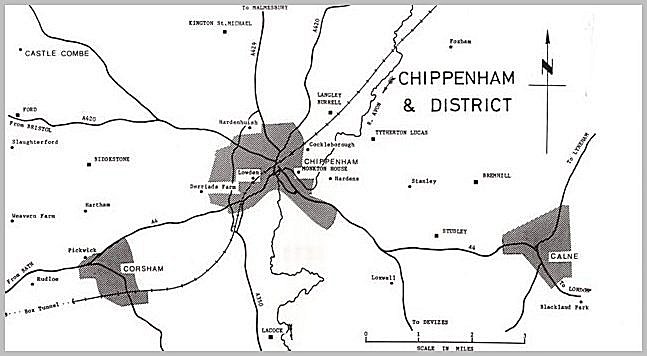
|
||
| Section 5 | ||
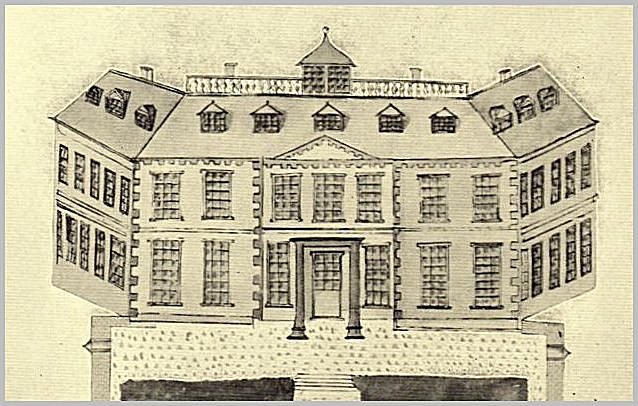
|
||
| Section 6 | ||
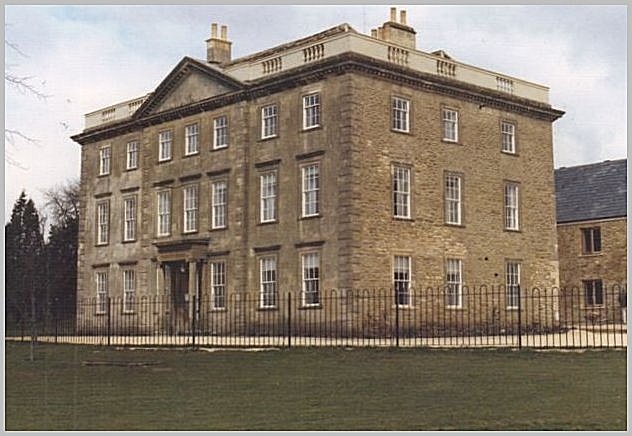
(south and east elevation, after conversion to Flats) |
||
| Section 7 | ||
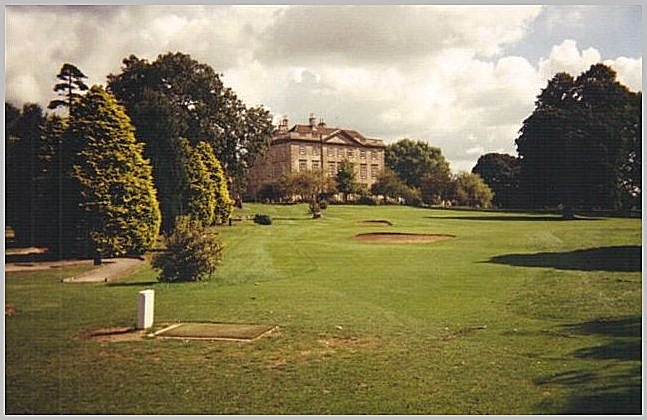
(west and south elevation) |
||
| Section 8 | ||
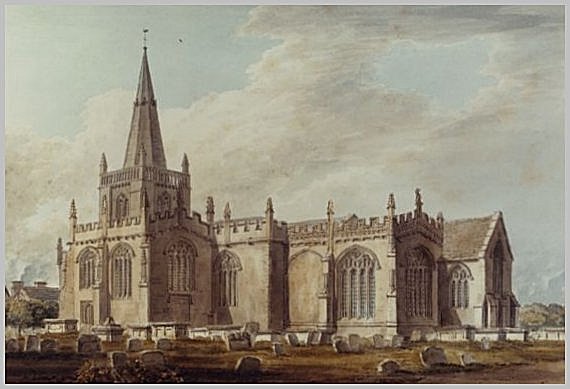
(south and east elevation) |
||
| Section 9 | ||
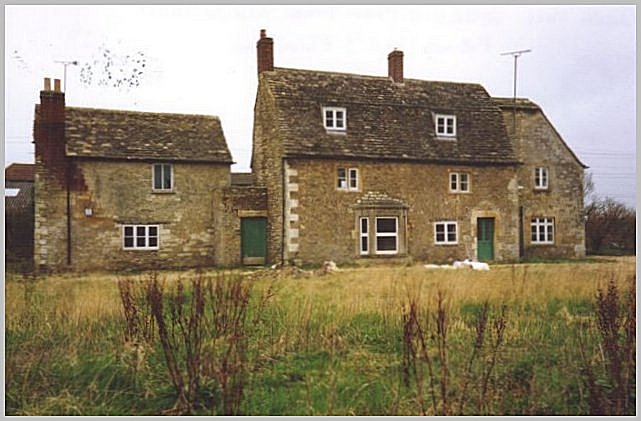
|
||
| Section 10 | ||
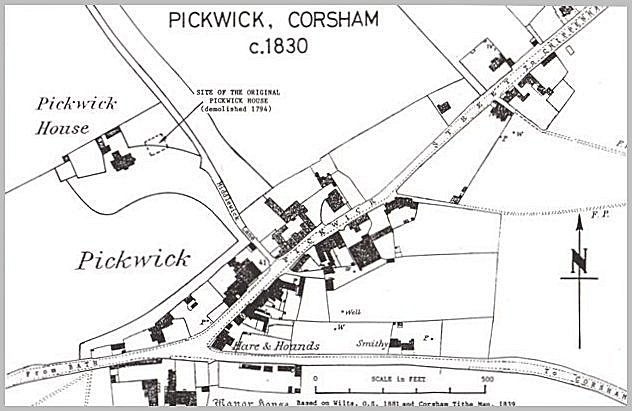
|
||
| Section 11 | ||
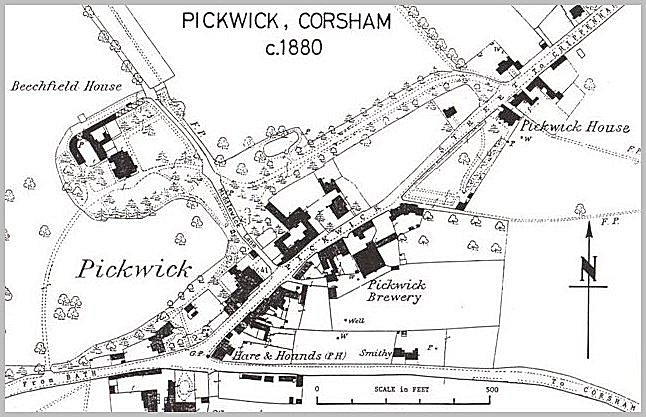
|
||
| Section 12 | ||
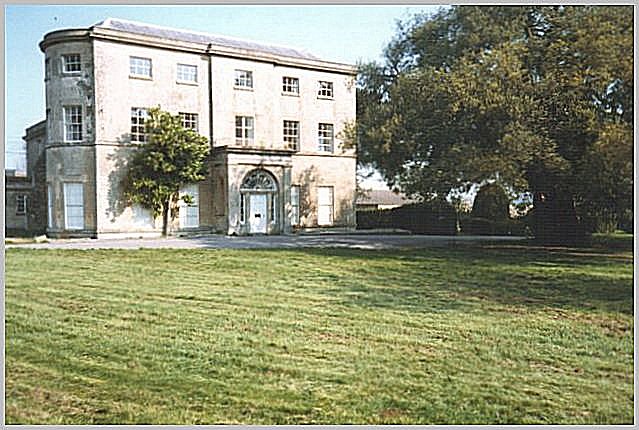
|
||
| Section 13 | ||
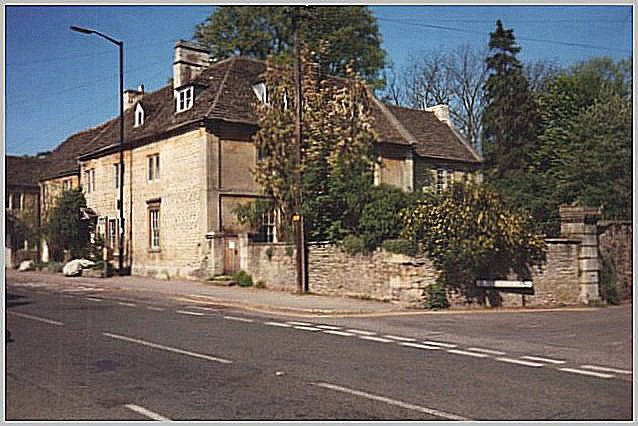
|
||
| Section 14 | ||
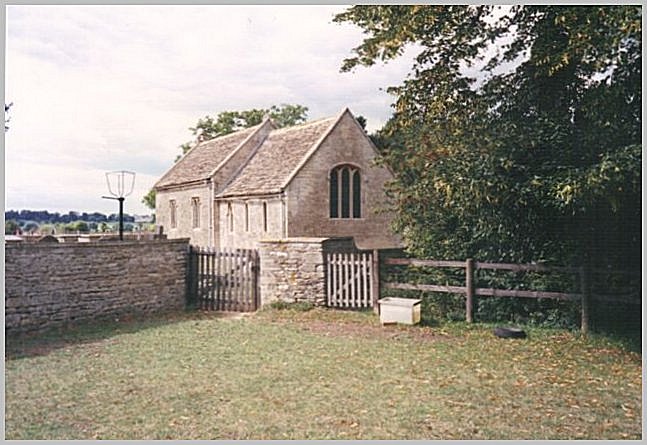
|
||
| Section 15 | ||
|
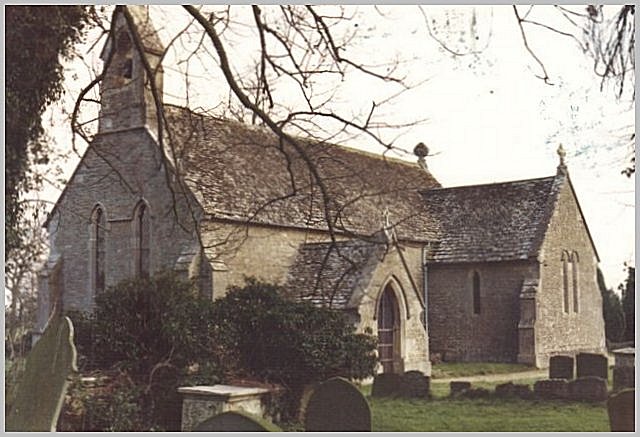
|
||
| Section 16 | ||
|
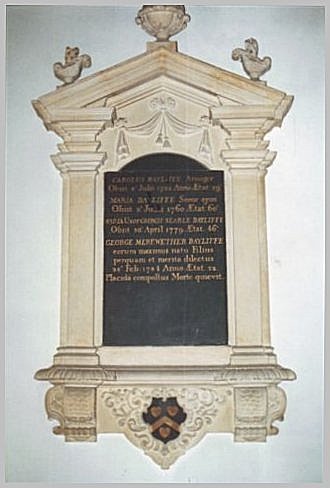
Church of St. Mary the Virgin, Seagry. circa 1987 |
||
| Section 17 | ||
|
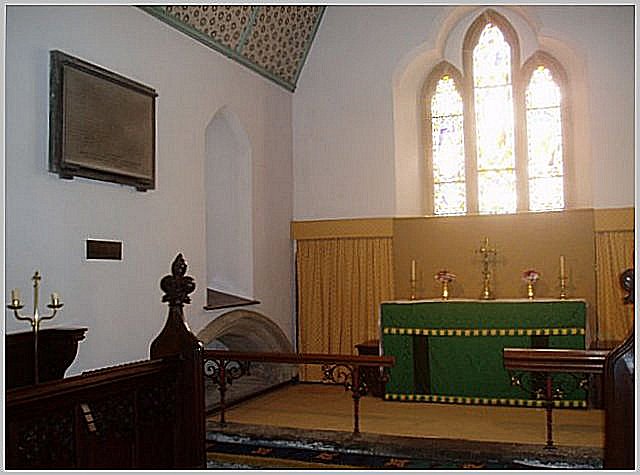
|
||
| Section 18 | ||
|
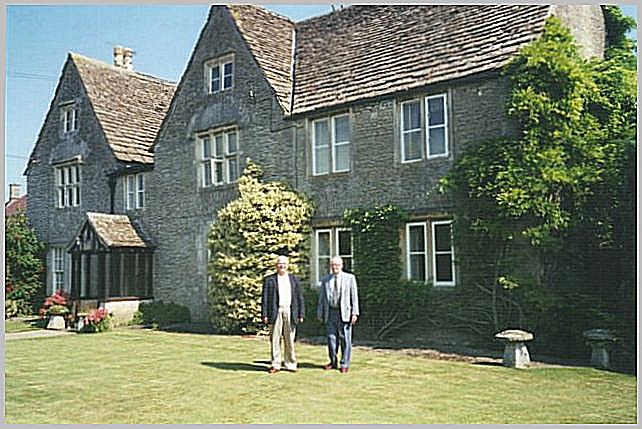
|
||
| Section 19 | ||
|
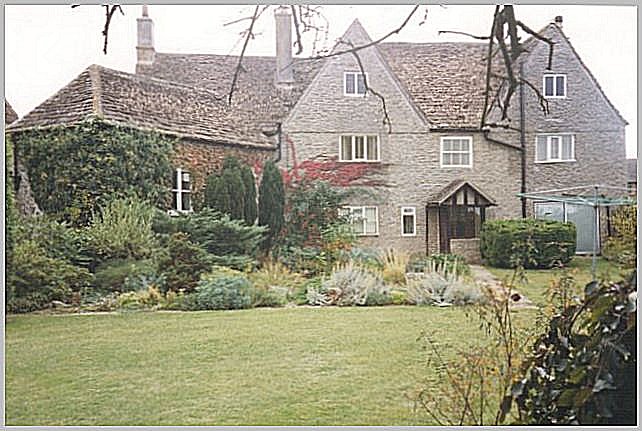
Justices Room (left) with hipped roof and Dungeon under. |
||
| Section 20 | ||
|
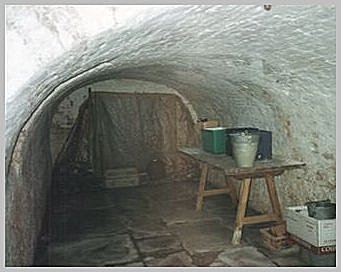
Manor Farm, Seagry. circa 2000
|
||
| Section 21 | ||
|
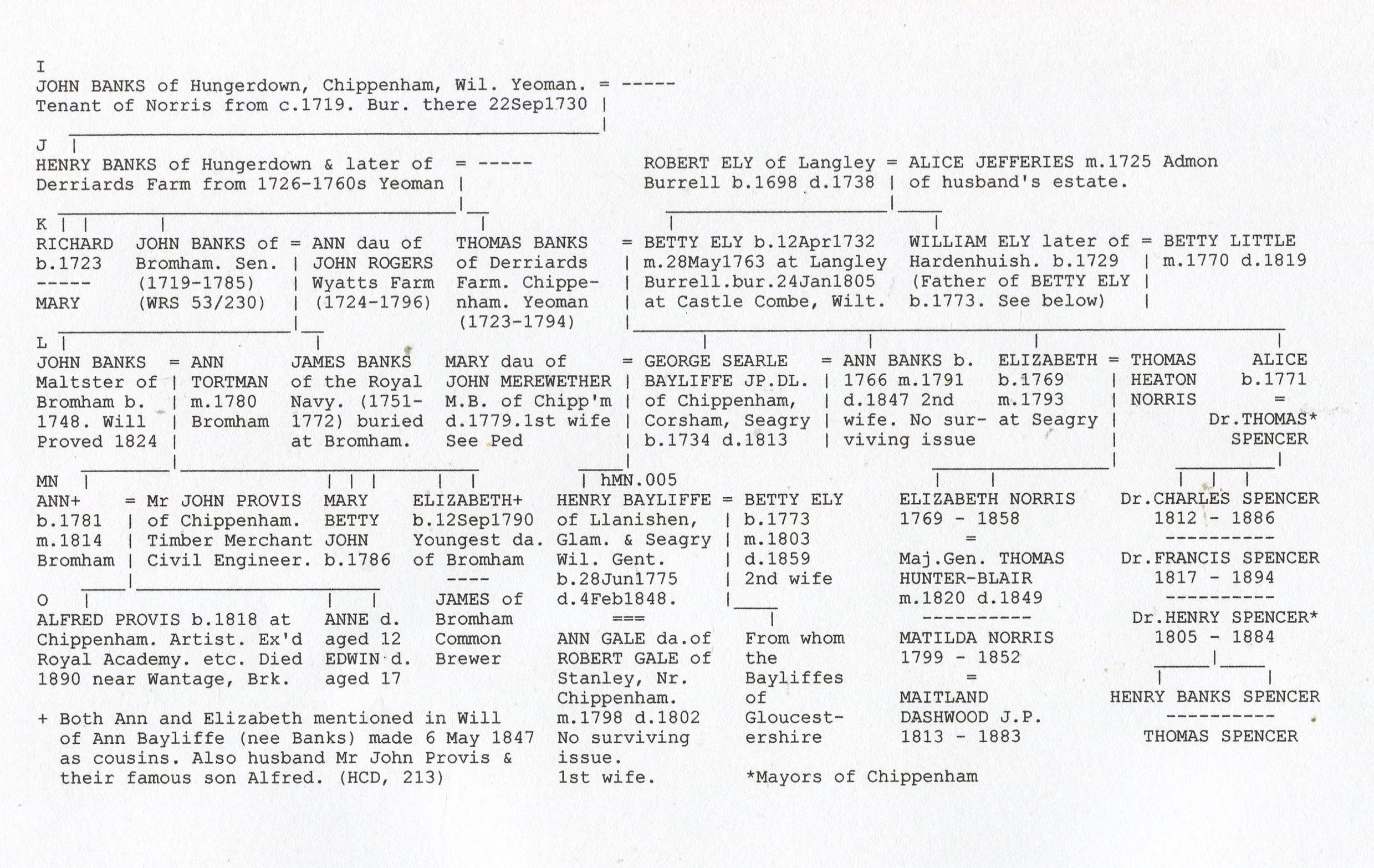
|
||
| Section 22 | ||
|
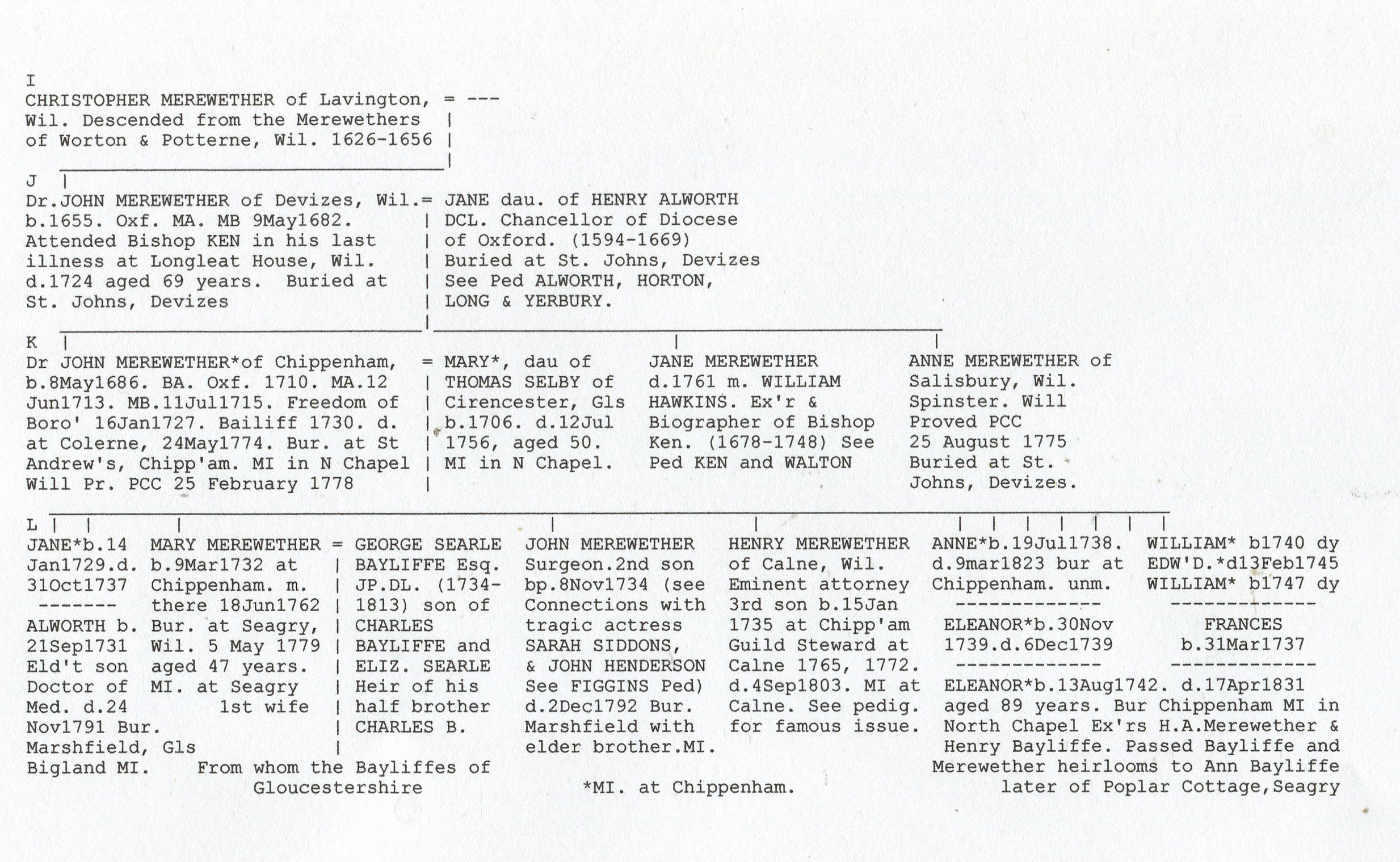
|
||
| Section 23 | ||
|
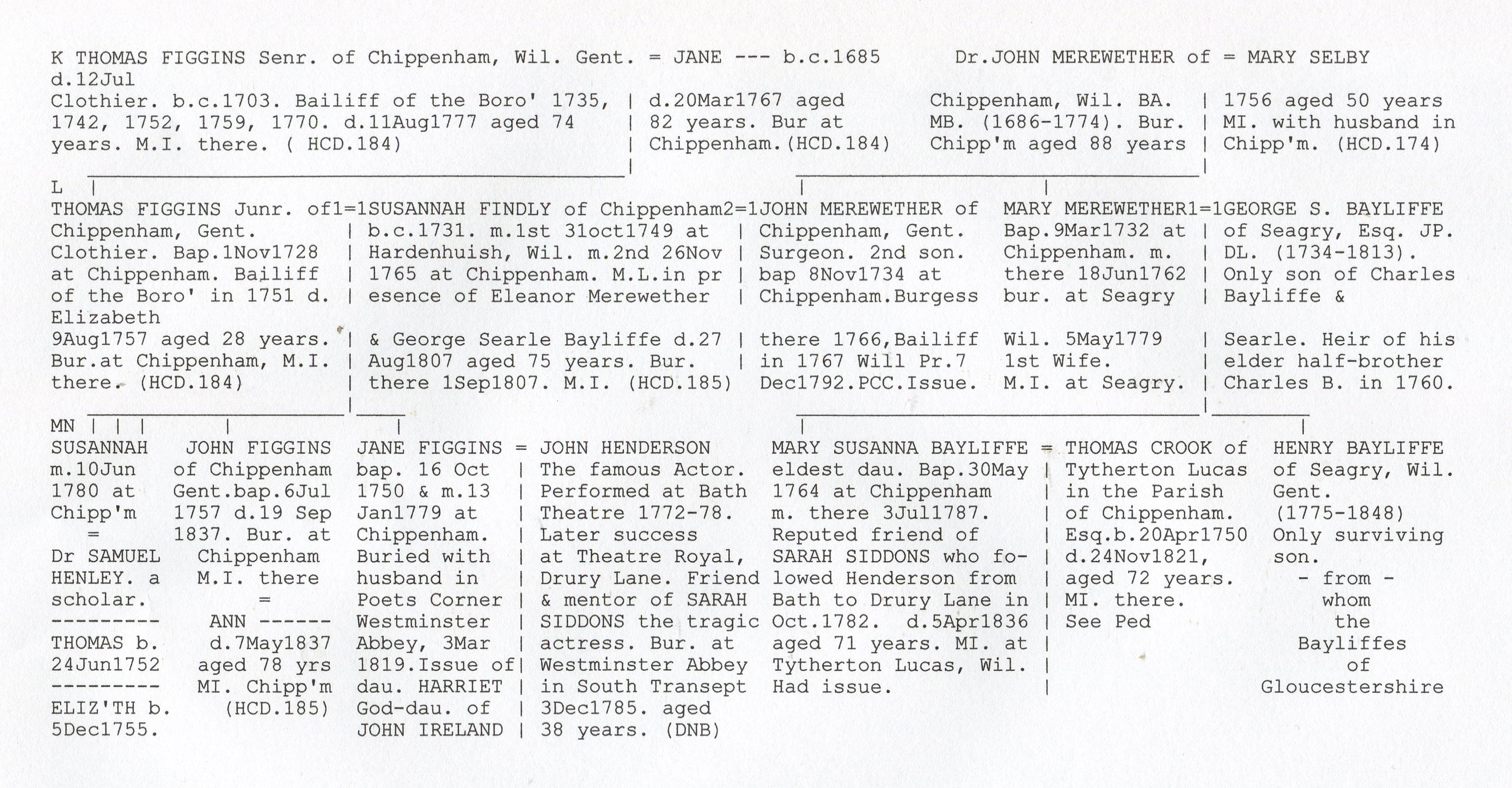
|
||
| Section 24: Notes and Sources | ||
|
||
| NOTE: My thanks are due to Julian Rawes for his input and constructing this web site, and Alan Merryweather for support and proof reading. Bryant G Bayliffe | ||
|
|
||